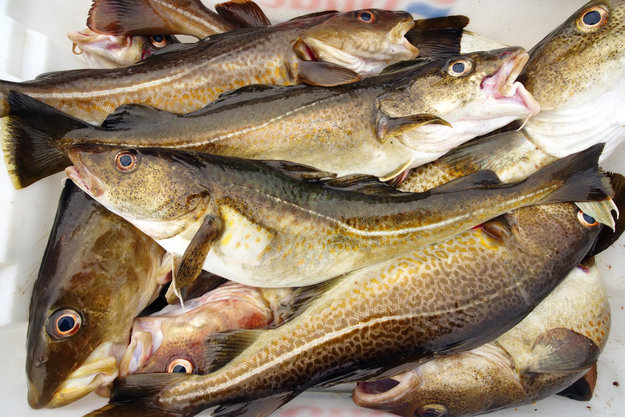
Incorporating fish into your diet offers numerous health benefits, including essential omega-3 fatty acids and high-quality protein. However, environmental concerns and potential health risks associated with certain species necessitate careful selection. Below is a list of 14 fish varieties you might consider limiting or avoiding, along with alternative options to ensure both personal health and ecological sustainability.
1. Atlantic Cod
Once a staple in many diets, Atlantic cod populations have been severely depleted due to overfishing, leading to significant ecological imbalances. Opting for Pacific cod, which is more sustainably harvested, can be a responsible alternative.
2. Atlantic Flatfish (Halibut, Flounder, Sole)
These bottom-dwelling fish often accumulate higher levels of contaminants and have faced population declines from overfishing. Pacific halibut, sourced from well-managed fisheries, serves as a more sustainable choice.
3. Caviar (Wild-Caught Sturgeon Roe)
The high demand for sturgeon roe has led to overfishing and endangerment of sturgeon species. Consider caviar from farmed sturgeon or alternatives like salmon roe to alleviate pressure on wild populations.

4. Chilean Sea Bass (Patagonian Toothfish)
This deep-sea fish has been overexploited, and many fisheries lack proper management, leading to illegal fishing practices. Black cod (sablefish) from Alaska offers a similar taste profile and is harvested sustainably.
5. Eel
Eels are slow to mature and have been overharvested, leading to population declines. Additionally, they are known to accumulate contaminants. Farmed catfish or sustainably sourced shrimp can be suitable substitutes.
6. Imported Basa, Swai, Tra, Striped Catfish
Often mislabeled and imported from countries with lax environmental regulations, these fish may be exposed to antibiotics and other chemicals. Domestic catfish, raised under stricter standards, is a safer alternative.
7. Imported Farmed Shrimp
Environmental degradation and poor farming practices in some exporting countries raise concerns about imported farmed shrimp. U.S.-farmed shrimp or wild-caught shrimp from certified fisheries are preferable options.
8. King Mackerel
Known for high mercury content, king mackerel poses health risks, particularly for pregnant women and young children. Atlantic or Spanish mackerel have lower mercury levels and are considered safer choices.
9. Orange Roughy
This species matures late and has a long lifespan, making it vulnerable to overfishing. It also tends to accumulate high mercury levels. Pacific halibut or domestic catfish can serve as more sustainable alternatives.
10. Shark
Shark populations are declining globally due to overfishing and demand for shark fins. They also contain high mercury levels. Opting for other seafood choices helps support marine ecosystem balance.
11. Swordfish
While prized for its flavor, swordfish contains elevated mercury levels. Limiting consumption and choosing smaller predatory fish like mahi-mahi can reduce mercury exposure.
12. Tilefish (Gulf of Mexico)
This species is noted for extremely high mercury content. Selecting fish like haddock or tilapia offers a safer dietary option.
13. Bluefin Tuna
Overfishing has significantly reduced bluefin tuna populations, and the species is slow to reproduce. Albacore tuna, when sourced responsibly, can be a more sustainable choice.
14. Imported Catfish
Similar to imported basa and swai, imported catfish may come from farms with questionable practices. Domestic catfish, regulated under stricter U.S. standards, is a better alternative.
Making Informed Seafood Choices
To enjoy the health benefits of seafood while supporting environmental sustainability:
-
Diversify Your Selection: Incorporate a variety of seafood into your diet to reduce pressure on any single species.
-
Consult Advisories: Stay informed about local and national seafood advisories regarding mercury levels and sustainability.
-
Verify Sources: Purchase seafood from reputable sources that adhere to sustainable fishing and farming practices.
By making conscious choices, you contribute to the health of marine ecosystems and ensure that seafood remains a viable resource for future generations.





